Lalitpur, Oct 11, 2025- The Locally Controlled Forest Restoration (LoCoFoRest) International Training Programme, led by the Swedish Forest Agency, officially began at the Himalayan Hotel in Lalitpur. The programme, themed “Using Wood/Bamboo as a Driver for Landscape Restoration,” focuses on scaling up forest landscape restoration while ensuring local community prosperity and maintaining ecosystem services.



The national workshop aimed to inform key forest and water stakeholders about sustainable and scalable forest landscape restoration, support Nepal LoCoFoRest Course Round 5 (CR5) change projects, promote collaboration between Swedish and Nepali experiences in local forest management, and encourage sustainable practices through invasive species control and turmeric-based livelihoods.


Karin Östberg from the Swedish Forest Agency opened the programme, emphasizing the importance of improving the efficiency of forest activities and the vital role of forest resources in restoration, climate change adaptation, mitigation, and sustainable economic viability. She highlighted forests’ value for wood-based products and fuel economy and explained that the programme’s core goal is to scale up restoration while securing community prosperity. Östberg outlined the five key pillars of the initiative—ecosystem science, gender, governance, market and entrepreneurship, and a human rights–based approach—stressing the importance of a sustainable market system to implement large-scale restoration effectively.


The first session featured Mani Nepal, SANDEE Program Coordinator and Lead Economist at ICIMOD, who delivered a keynote speech on “Economics of Forest Conservation and Restoration in South Asia.” He discussed opportunity costs, the role of incentives, forest values under different management systems, social networks, and private tree planting. Presenting data on benefits, costs, and carbon values, he emphasized that while direct benefits from conserved forests may be lower, their co-benefits—such as biodiversity, climate, and livelihoods—are significant. He highlighted the importance of incentives like REDD+, the higher value of private trees, the role of social networks in encouraging tree planting, and the positive impacts of forest restoration on tree cover and household welfare.


The second session was led by Dipesh Joshi, Team Leader at GGGI Nepal, on the topic “Connecting the Dots for Ecosystem Restoration and Resilient Economy: The Landscape Approach.” He began by sharing the historic 26 Edicts of King Ram Shah (1666–1693 B.S.), which highlight the importance of preserving forests near water sources, imposing fines for tree cutting, and linking forests to water security and livelihoods. Joshi discussed key elements for effective restoration-protecting spaces, reducing non-climate stress, adopting adaptive management, and strengthening institutional mechanisms, capacity, ownership, and financing through public-private partnerships and carbon trade.


He emphasized the role of bamboo and rattan in land restoration, noting both challenges and the importance of conserving areas like the Khata Corridor. Speaking on Nepal’s Terai landscape, he stressed that restoration must align with people’s livelihoods, as communities prioritize immediate needs over carbon benefits. Joshi remarked that “carbon trade is a myth for local people,” and if we examine the ground realities in Nepal, this seems to be true. He concluded that relying solely on grants is not sustainable for long-term restoration efforts.


The third session was presented by Manju Ghimire, Research Officer at FRTC, on the National Bamboo and Rattan Development Strategy 2025 (2081 B.S.). She highlighted bamboo and rattan’s cultural, economic, and environmental importance, noting Nepal has 53+ bamboo species (7 endemic) and 10 rattan species across all provinces. She shared that despite their potential, challenges such as resource degradation, trade deficits, technological gaps, low investment, and weak market linkages persist. The strategy focuses on sustainable management, conservation and commercial farming, promotion of indigenous knowledge, technology and capacity development, quality enhancement, and greater private and cooperative sector involvement. It aims to address gaps, promote a green economy and climate resilience, and will be reviewed every five years by MoFE with stakeholder participation.


The fourth session was presented by Binita Karki, Environmentalist and Restoration Practitioner, on “Understanding Landslides in Nepal: Soil Analysis and Sustainable Land Restoration Approaches.” She highlighted that landslides are among the most destructive natural hazards globally, caused by complex interactions of geological, soil, hydrological, land cover, and human factors, with rainfall being the primary trigger in Nepal.


Karki shared a case study of the Nagdhunga to Malekhu Bazar section of the Prithvi Highway, a steep and landslide-prone route connecting Kathmandu Valley to Terai/India. The predominant landslide material was sandy-slit soil, highly susceptible to erosion due to low cohesion, with high porosity increasing water infiltration and slope failure during heavy rain.


She emphasized sustainable land restoration, particularly soil bioengineering, as a key method for long-term slope stabilization. This approach uses live plant materials to enhance shear strength, control erosion, and reduce pore water pressure. Recommended species for restoration include grasses like Vetiver, Napier, and Dubo; shrubs such as Bains, Bhujetro, and Namdi Phul; and trees like Uttis, Khayer, and Sisau. She noted that Nepal has over 33 popular plant species suitable for soil bioengineering and slope stabilization.


The fifth session was presented by Dr. Arjun Chapagain, PhD, from the Innovative Research and Studies Center (IRSC), Nepal, on “Role of Private Forestry in Restoration: A Case Study of Smallholder Farmers in Jhapa, Nepal.” He highlighted the important contribution of private forestry to forest restoration, income generation, sustainable land use, and environmental benefits. Dr. Chapagain noted that Jhapa hosts around 800–900 furniture industries, with only half officially registered, and 35 veneer industries consuming over four million cubic feet of wood annually, mostly sourced from hilly districts. He emphasized that the potential of private forestry remains underutilized and called for policy reforms to allow direct selling from farmers to industries, better market systems, subsidies, and tax incentives. He also highlighted systemic gaps in registration, market access, technical support, and policy clarity. The session concluded that empowering smallholder farmers, women, and entrepreneurs through coordinated efforts could position private forestry as a key pillar of forest restoration in Jhapa.


Following the expert sessions, the workshop moved into Part 1: Using Wood in Construction – The Potential for Developing New and Sustainable Value Chains, and Part 2: Invasive Plant Species Management and Livelihood Opportunities. Participants engaged in group discussions led by Kals Bengtsson, Eco-Innovation, focusing on the key features of a functional value chain for wood in construction.


The discussions emphasized the shift from a fossil-fuel-based economy to a bio-based economy, highlighting bamboo as one of the largest natural climate solutions, particularly relevant for Nepal. Participants were divided into three groups to explore the main question: “Is the Wood-Bamboo Solution relevant for Nepal?” Drawing on their expertise, they raised various questions and insights, concluding that bamboo and rattan offer strong potential for sustainable development, forest restoration, and livelihood enhancement in Nepal.


Following the expert sessions, Course Round 5 participants presented their respective projects. Rojan Karki and Madhuri shared a presentation on “Regenerative Agriculture and Social Empowerment: A Holistic Approach to Soil Restoration through Cultivation, Value Addition, and Training in Bhanukunj, Tanahu.”


This was followed by Muna and Ramesh, who presented “Adding Value to Turmeric Produced from Restored Forests in Nepal.”


The session concluded with Govinda and Ashok presenting “Promoting Bamboo Innovation Centre in Eastern Nepal.”


Malin Lundberg Ingemarsson, PhD, Advisor on Water, Climate, and Environment and mentor for LoCoFoRest since Course Round 3, highlighted that despite the challenges of climate change, Nepal has significant opportunities for sustainable forest restoration and climate action. She emphasized that with effective strategies, knowledge sharing, and community engagement, Nepal can advance ecosystem restoration, sustainable resource management, and climate resilience. According to her, leveraging local resources like bamboo and rattan, along with scientific research and innovative approaches, can maximize the country’s environmental and socio-economic potential. She also noted that the workshop featured detailed discussions on using bamboo and wood as key tools for forest restoration, contributing to local community empowerment, biodiversity conservation, water security, and climate change adaptation.


Forester Sujan Khanal, Programme Coordinator, emphasized the critical importance of initiatives like LoCoFoRest for countries like Nepal, where the impacts of climate change are increasingly severe. He noted that such training programmes provide a valuable platform for knowledge sharing, capacity building, and collaborative discussions among forestry experts, community representatives, and policymakers. According to Khanal, the exchange of ideas and practical experiences during the programme not only enhances technical understanding but also helps in shaping actionable strategies for forest landscape restoration. He highlighted that these programmes serve as a foundation for policy advocacy, enabling the government and stakeholders to develop evidence-based policies that support sustainable forest management, climate adaptation, and community resilience. Khanal further stated that fostering local ownership, promoting innovative solutions like bamboo and rattan-based livelihoods, and integrating scientific research with traditional knowledge are key outcomes that can strengthen Nepal’s overall climate and environmental resilience.


The programme featured a stall from Bighnaharta Nepal, an organization focused on creating self-sustainable communities.


Another stall showcased heritage Tharu crafts and Mahuwa wine, a traditional beverage made by fermenting the sweet, fragrant flowers of the Mahuwa tree. Known for its unique flavor and cultural significance.


Following the Lalitpur session, Course Round 5 participants will conduct field visits in Jhapa district, followed by additional follow-up activities in Tanahu district, bringing together forestry experts, community representatives, and development partners to further strengthen locally controlled forest restoration efforts across Nepal.











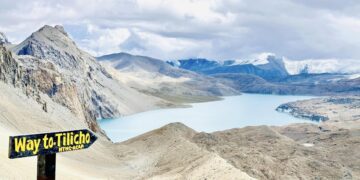

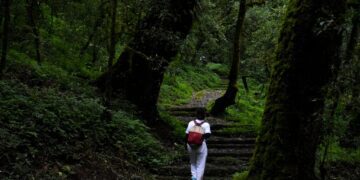
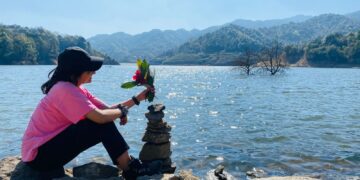
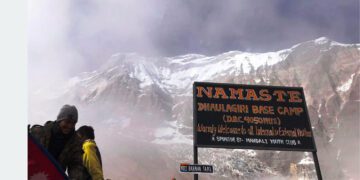
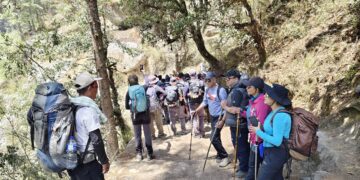







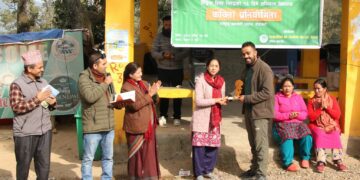
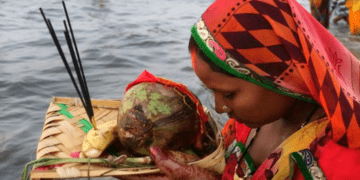

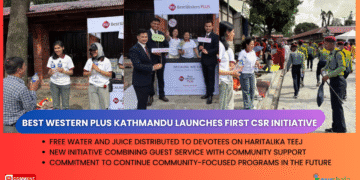








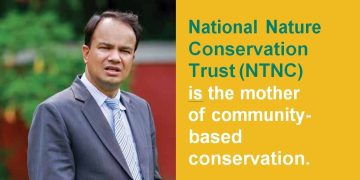
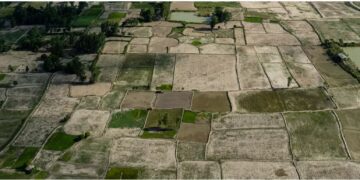
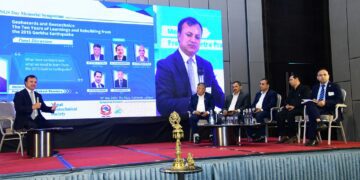
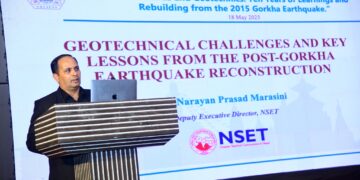
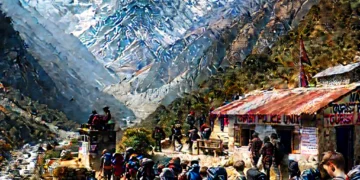

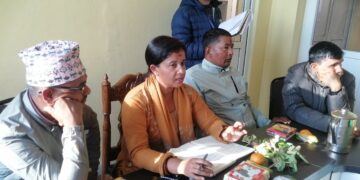

















Discussion about this post